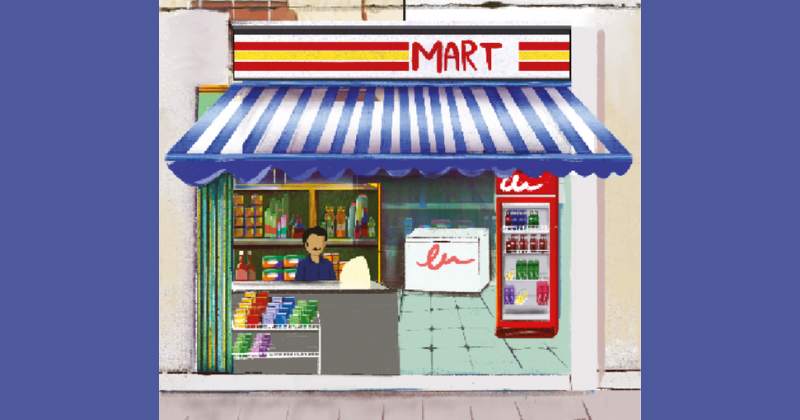Come Into My Kiryana
Published in Jul-Aug 2021
Despite the fact that the grocery retail landscape in Pakistan is said to be in a state of flux due to the proliferation of local modern grocery retail, the traditional grocery models – the kiryana shops and neighbourhood general stores – continue to dominate the market.
Usually spread over 500 to 1,000 square feet and with limited or sometimes no walk-in space, these stores are owned by single individuals (some run by second or third generation family members) who manage them alone or with help from family members or people whom they trust. Unlike modern grocery retail stores, which are usually located within shopping malls or on the main roads, these stores are often embedded within residential localities. This, in many ways, is their unique advantage as they provide ease of access to residents, thereby providing a strong basis for regularity, familiarity, connection and trust. They are well aware of the purchase preferences of their customers and stock accordingly.
In general, their inventories are maintained on paper and all transactions are done via cash (some of the larger ones now use computers and facilitate credit card payments). Although they stock all essential grocery items, their best-selling products are staples (flour, lentils, rice, and spices) which are available at much lower prices compared to modern trade, because they are bought in bulk from the wholesale markets. For interest, a few of the better established stores even have their own flour mills (chakki) within their premises. “Chakki is a very attractive proposition for customers and it accounts for 20% of my turnover,” says an owner who has been running a store for 35 years.
The items purchased wholesale are stocked in sacks at the back of the shop and then packaged in different SKUs ranging from 250 grams to five kilos; the range reflects their diverse customer base, which runs from the affluent to daily wage earners, as well as small local dhabas. In terms of branded items such as biscuits, cooking oil, detergent, shampoo and tea, these are delivered by distributors on a weekly, bi-weekly and daily basis, depending on the demand, and bought either on a cash or credit basis. In this respect, although the margins made on staples and spices are good, when it comes to branded products, they leave much to be desired. Picking up a branded product that retails at Rs 185, a store owner says he is charged Rs 175.40 by the distributor, leaving him with a Rs 9.60 margin. Another owner, rather than buying directly from the manufacturer, buys his cooking oil directly from the wholesaler at a discounted rate.
“He offers a good discount per unit if I buy in bulk and pay cash. I bought a cooking oil brand the other day; the company rate was Rs 1,690 and I bought it for Rs 1,410 and sold it for Rs 1,600. If I get good rates, I buy goods worth lakhs and sell them cheaper than the other stores, which gives me an edge.” However, the flip side is that as per the policy of all FMCG companies, in case of expiry or damage, the products are not replaced, unless they have been purchased through a company distributor.
Apart from the price advantage, another attraction is the customisation they offer; they know their customers’ preferences and cater accordingly. Another big advantage for these stores is their willingness to offer credit on a monthly basis (albeit only extended to customers they have known for a long time). “We give credit because we know we will be paid. It is muhalladari,” comments a store owner. On average, 80% of the transactions are made on credit. Another advantage is that damaged products are replaced without requiring proof of payment. “We know who our customers are and that they are not going to cheat.”
Although these stores deny competing with each other, they make sure their customers can buy everything they want from them. “If someone comes to me to buy four things and two are missing, he will go to the store where he can find all four.”
Although still largely digitally resistant, these stores are providing free home delivery, especially since the lockdowns started. Orders are taken over WhatsApp or on the phone. The pandemic also brought another advantage; the fear of crowding at the larger grocery stores has encouraged customers to venture into their neighbourhood shops.
So are these stores threatened by the growing numbers of modern grocery retail stores? The answer is a unanimous no. “To go to a supermarket, one has to have at least Rs 5,000 in one’s pocket, and not everyone has that. Some families go to those shops for the experience and usually at the beginning of the month. After that, they come to me because their money has run out.” In this store owner’s opinion, for a family with an average monthly grocery budget of Rs 10,000, going to a supermarket is not a viable option, especially as they end up buying unnecessary stuff. As he points out, he does not stock toys, candies or chocolates as a means to tempt further purchase.
These store owners believe they have enough USPs to compete with modern international retail and local grocery stores and that their existence is unlikely to dent their business or change their customer base. In many ways they are offering a rare kind of customer service – and one that brings with it an enduring customer loyalty. If you are a regular, they will get what you want at the best possible price and at the SKU you can afford, replace it if necessary and extend you a credit line when you need it. They see no reason why they should change a business model that has worked for them for decades.




Comments (0) Closed